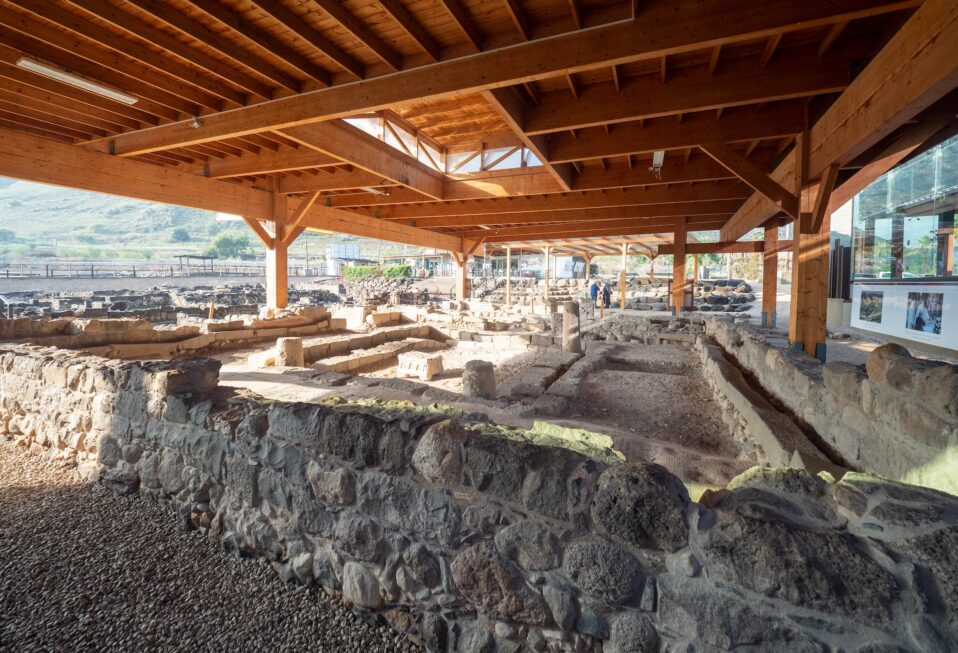By Stephen Faircloth
Nestled along the western shore of the Sea of Galilee, just a few miles north of Tiberias, the ancient settlement of Magdala offers a remarkable window into Jewish life during the time of Jesus. Known by multiple names, Magdala or Migdal Nunaya in Hebrew and Aramaic, and Taricheae in Greek and Latin, this city played a central role in the economy and culture of the region.
Greek sources called it Taricheae, meaning “factories for salting fish,” a reminder that everyday labor and community life were part of God’s provision. The bustling harbor connected smaller villages, including Capernaum, to wider trade networks, illustrating how God often uses ordinary places to accomplish extraordinary purposes. When the Gospels describe Jesus arriving by boat in the region of Gennesar, He likely stepped ashore in Magdala’s thriving port.
Though tradition has long identified Magdala as the hometown of Mary Magdalene, there is no conclusive historical proof of this connection. Still, her life shows how God can redeem any story, and how an encounter with Christ transforms us from the inside out.
Modern excavations have brought Magdala to life in vivid detail. Archaeologists uncovered streets laid out in a precise grid, elegant homes with expertly cut stone, intricate mosaic floors, and fine pottery and glassware—all signs of a prosperous community. Many of these homes contained private ritual baths (mikva’ot), even though the Sea of Galilee was just steps away. This dedication reveals how seriously the people of Magdala took purity and devotion, weaving faith into the fabric of daily life.
Among the most significant discoveries is Magdala’s ancient synagogue—one of the earliest ever found. Though modest in size, it was rich with spiritual meaning. The main hall was ringed with benches, frescoed walls, and mosaic floors. At its center stood a beautifully carved stone, likely supporting the sacred Torah as it was read aloud. The carvings include the seven-branched menorah from the Jerusalem Temple, reminding worshipers that even in Galilee, their faith was anchored in God’s promises and presence.
While the Gospels do not specifically mention Jesus teaching in Magdala, He traveled throughout Galilee, proclaiming the Kingdom and opening the Scriptures in synagogues just like this one. It is entirely possible, perhaps even likely, that He stood in this very space, reading and explaining the Word of God, calling people to repentance, hope, and new life.
Magdala is a powerful reminder that faith is not reserved for holy places alone. It flourishes in workshops, fishing boats, kitchens, and markets, wherever people choose to honor God with their lives. Like the men and women of Magdala, we are called to integrate worship into our work, to pursue purity of heart even in ordinary routines, and to welcome Jesus into every corner of our day.
Are there areas of your life where you have separated faith from daily tasks? What would it look like to invite Jesus into your own “harbor,” your own “workshop,” and live every moment for His glory?
Stephen Faircloth is the President of CBN Israel, an initiative dedicated to sharing the true story of the Jewish nation and inspiring a global community of Christians to stand with Israel and support her people in need. Our vision is to reshape the global conversation about Israel by fostering understanding, hope, and healing between Jews and Christians around the world. For more than 50 years, the Christian Broadcasting Network has supported Israel. By joining CBN Israel, you become part of this enduring legacy, transforming lives today and strengthening Christian support for Israel for generations to come.




Post a comment